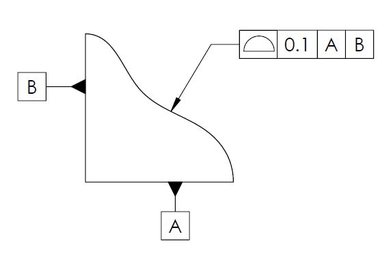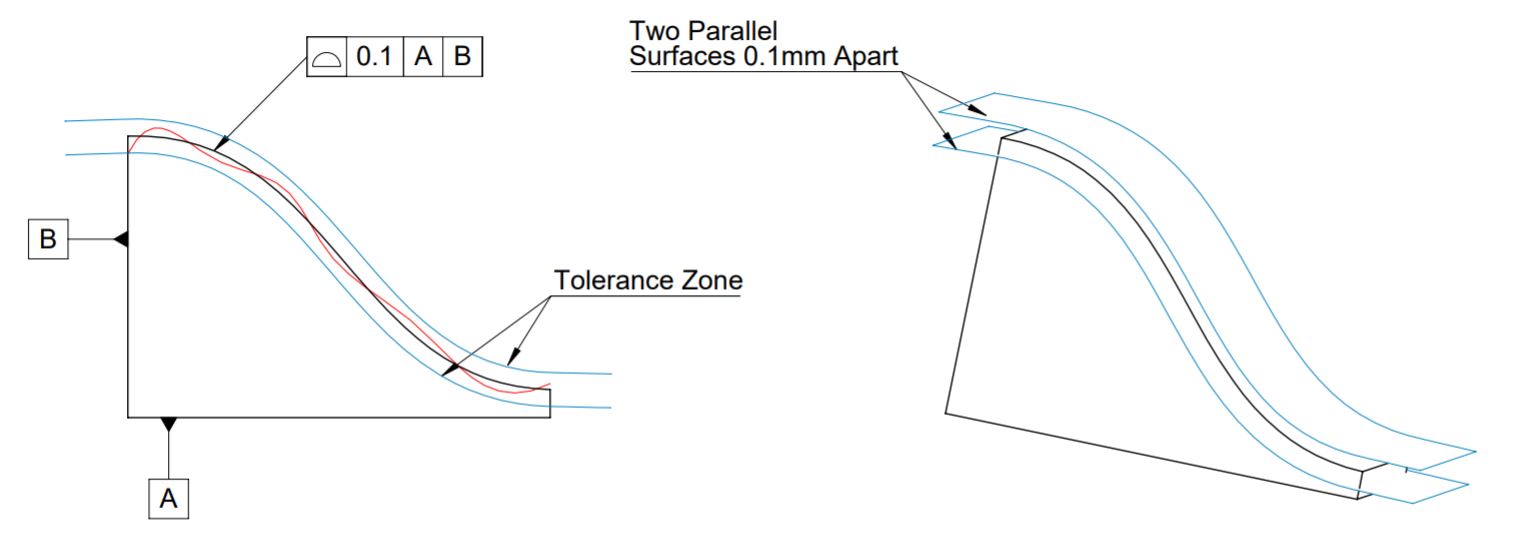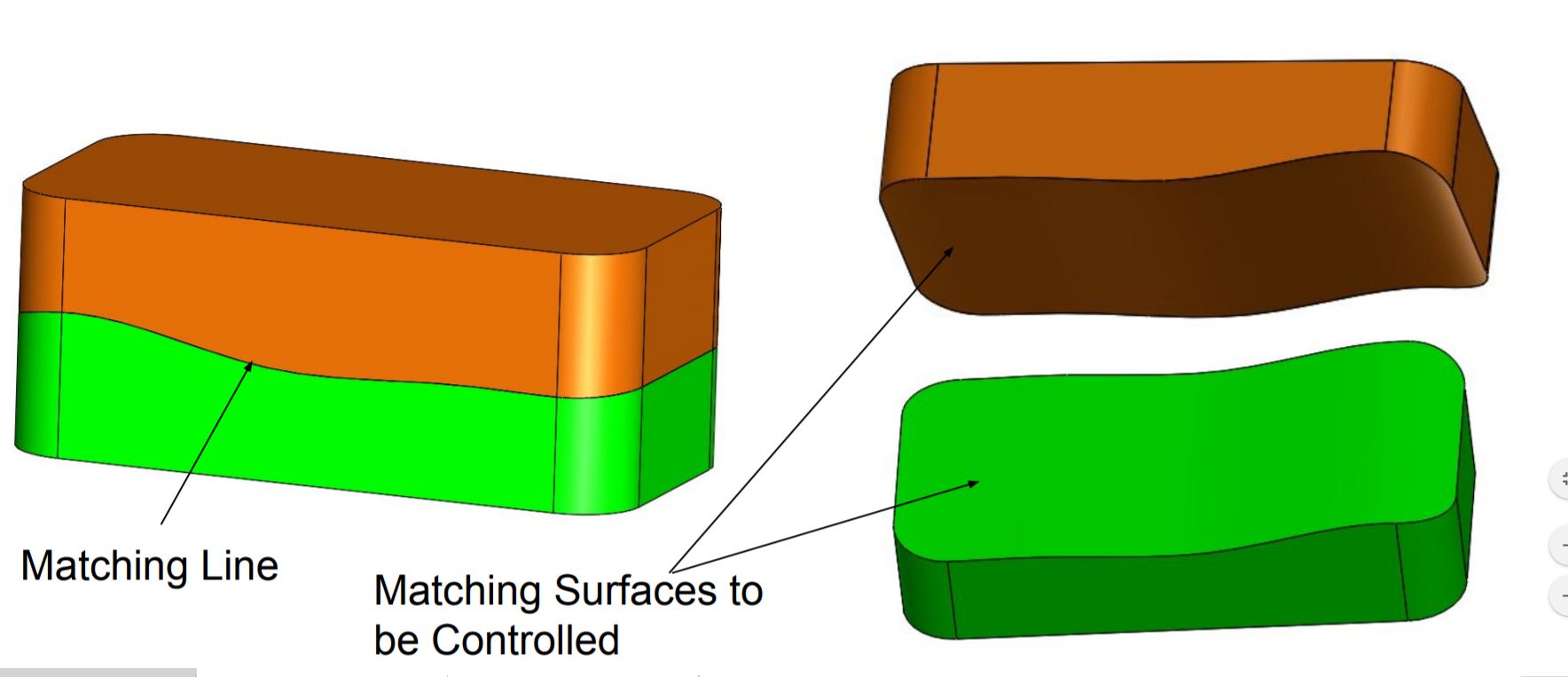Profile of a surface control tolerance in gd&t is a type of profile control tolerance. It creates a 3D tolerance zone and simultaneously controls the feature size, orientation, location, and form. When applied to a surface, it controls the allowable variation in the surface from the actual surface. Don’t miss this article on the basics of Geometric Dimension and Tolerance.
Profile of a Surface Control Tolerance Representation

We can use the GD&T Profile of surface control with or without datum plane and all-around. But MMC and LMC modifiers do not apply to it. Click this link to know the symbols used in geometric and control dimensional tolerances.
Tolerance Zone

“Profile of surface Control” in GD&T creates a 3-dimensional tolerance zone of two surfaces parallel to the controlled surface and at a distance equal to the tolerance value. All points on the controlled surface should lie within this tolerance zone.
Application
Profile of surface control application is to control complex, curved, or irregular surfaces (such as the profile of turbine blades, and car aerodynamic surfaces).
Surface control tolerance is used as an alternative to control flatness, Cylindricity, orientation, or feature size. Here are application examples of Profile of surface control Tolerance.

As shown in the above example, when we apply the profile of surface control tolerance to an all-around surface. It controls the size and flatness of that feature/surface.

As shown above, when the requirement is to match surfaces with good accuracy and precision (tool die mating surfaces or top and bottom housing mating face). Profile of surface control is the best available option to control the required surfaces.
How to Measure it?
For relatively simple profiles, you can measure the profile of a surface by moving the gauge at the controlled section when referenced to the actual profile. But for complex-profile, quality engineers use CMM, VMM, or 3D scanners.
We will keep adding more information on the profile of surface control in gd&t. Please add your suggestions, comments, or questions in the comment box.

Add a Comment